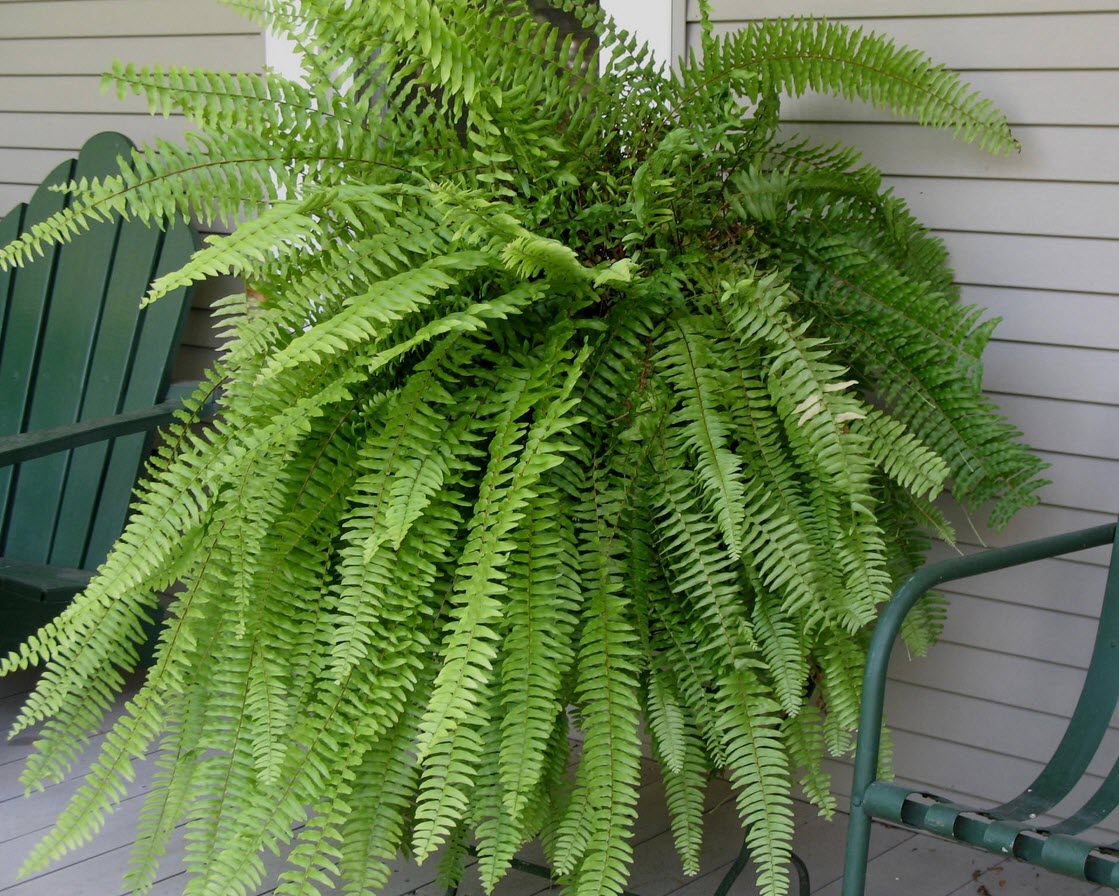Contents
Nephrolepis exaltata ´Bostoniensis´ is a natural variant of the fern species Nephrolepis exaltata, and it was discovered in a large shipment of ferns sent from Philadelphia to Boston in 1894. With it´s appealing “feathery” look, it has become a popular ornamental houseplant, and it can also be grown in gardens if the winters are mild enough. In some regions, it can be kept outdoors during the warm season but must be sheltered indoors during the cold season to survive.

It is the many segments of the pinnae that gives this fern its feathery look. Some individual plants are more “feathery” than others. It is also good to know that sometimes a frond may develop that looks more like the wild version. If this happens, simply cut it away. If these “wild style” fronds are allowd to stay, they can gradually take over the plant.
This fern is often grown in hanging baskets or placed on pedestals, to properly showcase its feathery oppulence.
Short info
Common name: Boston Fern
Family: Lomariopsidaceae
Shape: Upright
Height: Up to 90 cm
Foliage: Green
Light: Bright but filtered
Temperature: 13°C – 24°C during the active growth period, 10°C – 12°C during the resting period
Watering: Plentifully during the active growth period, moderately during the resting period
Humidity: High is best, but will usually tolerate less
Native range and habitat
The species Nephrolepis exaltata is native to the Americas where it can be found in humid forests and swampy areas of nothernern South America, Central America, the Caribbean, Mexico, and Florida, USA. The variant known as Nephrolepis exaltata ´Bostoniensis´ was found in a shipment of ornamental plants sent from the city Philadelphia to the city Boston (both in the USA) in 1894.
Description
This is an evergreen fern.
In the wild, Nephrolepis exaltata sometimes exceed two metres in height but potted houseplants of the Nephrolepis exaltata ´Bostoniensis´ version usually stay much smaller, typically around 60-90 cm.
The fronds are 50 cm – 250 cm long and 5 – 15 cm wide, with alternate pinnae. Each pinna is 2-8 cm long, and consists of many segments, which makes the plant look “feathery”.
Caring for a Nephrolepis exaltata ´Bostoniensis´
Light and position
As a houseplant indoors, this fern likes bright but filtered light (it can be damaged by direct strong sunlight).
Outdoors, it usually does best in partial shade or full shade.
Temperature
 This fern can be kept in normal room temperature year round. If you want to give it a proper resting period, lower the temperature to 10°C – 12°C.
This fern can be kept in normal room temperature year round. If you want to give it a proper resting period, lower the temperature to 10°C – 12°C.
The Boston Fern can handle temperatures up to 24°C well, but when the temperature is above 20°C it is important to make the air extra humid.
Boston Ferns will appear to die if exposed to frost, but there are many reports of seemingly dead plants growing back again in the spring if the winter wasn´t too harsh.
Watering
When the temperature is 13°C or higher, water plentifully and keep the potting-medium thoroughly moist at all times.
If the temperature is below 13°C for more than 48 hours, the plant will go into resting. During the resting period, allow the top third of the potting-medium to dry out completely before you water again.
Humidity
High humidity is recommended, but this fern will usually tolerate less unless the temperature is above 20°C.
Nutrients
During the growth period, feed standard liquid fertiliser twice a month.
If the plant is growing in soil instead of a peat-based and/or leaf-based potting medium, feed once a month instead. (We do not recommend growing this fern in soil.)
Repotting
It is time to repot when the roots have filled the pot. The best time of year to repot is spring.
